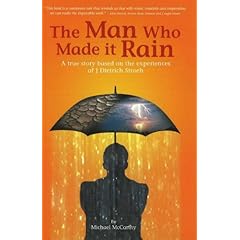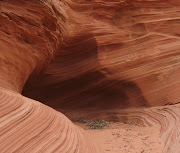
 Some Native Americans, Balkans, ancient Egyptians and modern Ethiopians have a specific dance to call for rain. In dry dire straits, Georgia's politicians and ecumenical ministers of many Faiths, led by Governor Sonny Perdue, stood or sat reverently on the front steps of the capitol and prayed - Hard - for rain. Central Presbyterian Church is right across the street in front of the Georgia capitol, just sayin'.
Some Native Americans, Balkans, ancient Egyptians and modern Ethiopians have a specific dance to call for rain. In dry dire straits, Georgia's politicians and ecumenical ministers of many Faiths, led by Governor Sonny Perdue, stood or sat reverently on the front steps of the capitol and prayed - Hard - for rain. Central Presbyterian Church is right across the street in front of the Georgia capitol, just sayin'.
Atlanta and other cities in the southeast are facing a water crisis of biblical proportions. There was no rain and Lake Lanier, the principal source of millions of Atlanta citizens water has just weeks of water left. The National Weather Service characterizes the area is in 'exceptional' drought conditions, their worst rating. (AP Photo)
 No public prayer can go without protest or skepticism. Atlanta Freethought Society stood to decry the mix of church and state, prohibited in the US Constitution. The Governor made an appeal for a federal emergency to President Bush. Some skeptics say the prayer was scheduled right before a forecast of possible rain.
No public prayer can go without protest or skepticism. Atlanta Freethought Society stood to decry the mix of church and state, prohibited in the US Constitution. The Governor made an appeal for a federal emergency to President Bush. Some skeptics say the prayer was scheduled right before a forecast of possible rain.Politicians turned to the Almighty to plead the case and seek drought relief with rain because no other secular remedy had worked. The specific Perdue prayer request was for rain. Desperate times call for desperate measures. Last night, a little over an inch fell in some places in Georgia. Nobody complained.
Governor Perdue was not the first to invoke prayer as a last resort. Back in July, the Alabama governor, Bob Riley, made a pitch to God, declaring an entire week "Days of Prayer for Rain"."Certainly, we're not gloating about it," Perdue said from a trade mission in Canada. "We're thankful for the rain and hopefully it's the beginning of more. ... Frankly, it's great affirmation of what we asked for."
As the drought has worsened, Perdue has ordered water restrictions, launched a legal battle against the release of water from federal reservoirs and appealed to President Bush.
About an inch of rain fell through north Georgia, and Atlanta received about a half an inch. It wasn't enough to ease the ease the drought, forecasters said.
"It puts a little bit of extra water in some of the smaller tributaries and reservoirs, but it doesn't
provide any significant long-term benefit," said Matt Sena, a meteorologist with the National Weather Service. "We need months of above average rainfall to start putting a dent in this," he added.
 The weather took an opposite approach on the other side of the world. In Bangladesh, a Category 5 Cyclone named Sidr, with winds in excess of 155 mph, roughly pushed the sea into an 18 foot wall of water to crash into the low lying coastal areas. Ten million citizens of Bangladesh live in the most vulnerable areas. In 1970 a half million people died during a Typhoon. The death toll is starting to mount in the aftermath of this monster storm, wave and torrential rains in one weather event.
The weather took an opposite approach on the other side of the world. In Bangladesh, a Category 5 Cyclone named Sidr, with winds in excess of 155 mph, roughly pushed the sea into an 18 foot wall of water to crash into the low lying coastal areas. Ten million citizens of Bangladesh live in the most vulnerable areas. In 1970 a half million people died during a Typhoon. The death toll is starting to mount in the aftermath of this monster storm, wave and torrential rains in one weather event. At least 28 fishermen were believed to have drowned at sea and thousands of homes were destroyed after a super cyclone tore into Bangladesh's southwest coastline yesterday.
The eye of cyclone Sidr, visible in satellite images as a colossal swirling white mass racing north from the Bay of Bengal, hit land in an impoverished coastal area near Bangladesh's border with India.
"The cyclone has battered Bangladeshi coastal areas. The velocity of the wind in that area is 220 to 240 kilometres. (This) is a violent storm," said Samarendra Karmakar, the head of the Bangladeshi meteorological department.


A fictional tale that outlines a true life quest of a water engineer for seeking rainwater in California is in the book, The Man Who Made It Rain by Michael McCarthy.

Hell and High Water: Global Warming The Solution & Politics and What We Should Do by Joseph Romm.










No comments:
Post a Comment